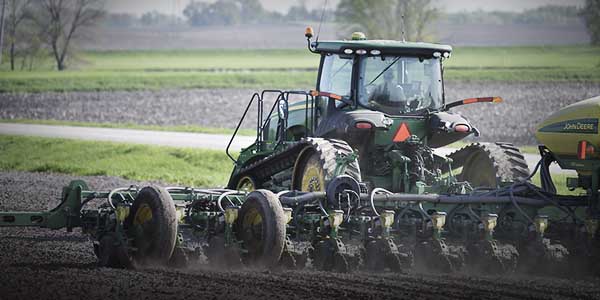AGRONOMICSUPPORT
YOU CAN TAKETO THE FIELD
From Splitting the Planter to Multi-Hybrid Planting
For many years farmers have been “splitting” their planters by putting one hybrid in part of the planter and another in the rest. Generally, this was done as a 50/50 split. This strategy here was to increase the overall yield of a given field as opposed to using only a single hybrid across the whole field.
In this short discussion we will touch on some of the reasoning behind this strategy, some pros and cons, and what researchers have found. Ultimately, this strategy has led to the newest technology with actual “on the go multi-hybrid” planters that use science based programs like AgReliant Genetics’ Advantage Acre® to maximize yield and profitability.
Why Plant Two Hybrids in the Same Planter?
- One thought was by using hybrids that varied in maturity by 2-3 days would spread out the silking/pollination period and thus improve grain set and yields.
- It is another way to test a new hybrid against a current favorite to determine future usage of one or the other.
- The primary reason was to lessen the growers risk by combining the strengths and weakness of the two hybrids thereby getting better overall yield vs using a single hybrid.
Pros and Cons
- In any give season, the prolonged silk emergence time along with longer shed of pollen may be a viable idea. However there is not a lot of research to back this up. Pollination itself can last up to two weeks with a single hybrid. More than enough pollen is shed during this time.
- Planting two hybrids side by side in the same environment and checking the yield difference of the two is a good way to discern which may be better suited to that particular field. A caution here is to be sure to match as closely as possible the different characteristics of each hybrid, especially – days to black layer, plant height and stress tolerance.
- In fields with lots of variability, having a high yielding hybrid (A) and a stress tolerant hybrid (B) could in fact help stabilize yields in some years. Fields with low variability have not shown any consistent yield bump from this two-hybrid approach and in many cases, have shown a negative impact from not having the whole field in the one high-yielding product (A).
Genetic Diversity
A good general term used in today's’ world is genetic diversity. This is a more appropriate way to describe “types” of hybrids rather than labeling them as one dimensional. Older terms such as racehorse, workhorse, offensive, and/or defensive tend to be too restrictive in describing a hybrid. Today’s modern genetics have improved to the point that there are not the nearly the differences as in the past. Most of today’s hybrids are bred to handle a wide variety of situations and are better able to handle both ends of the yield spectrum from high to low. This doesn’t lessen the need to have different types it simply makes it’s more crucial to know the genetic diversity of the hybrids you use.
Hybrid Stability
Along with the genetic diversity is another commonly used term, hybrid stability. This term is key to plant breeders and agronomists because it is a gauge of just how well a hybrid will respond over time and environments. A stable hybrid will be more consistent in yield over time from high to low where as a less stable hybrid will have much more variability in yield from one of the spectrum to the other.
Fast Forward to Multi-Hybrid Planting
This technology is improving rapidly and uses many of the concepts talked about above but with much more precision. With a program like AgReliant Genetics’ Advantage Acre® you can take into consideration a variety of factors to increase productivity. Instead of relying on the old SURGO maps used for years we can take those same areas and overlay a “Functional Soil Map” to better gauge the productivity of all areas of a field. By coupling our knowledge of LG Seeds’ hybrids at various population rates and on various soil types we have fine-tuned the information needed to succeed with the multi-hybrid planter concept. Add to this a long-term weather forecasting program and you now have a powerful tool to help increase your profitability on every acre.
Whether you are planting with a standard fixed rate planter, a variable rate planter or even the new multi-hybrid units, the information contained in a program like Advantage Acre® can help you make better decisions for your bottom line…. profitability!
Resources
https://www.grainews.ca/2014/06/12/mixing-corn-hybrids-to-increase-yield/
https://www.agprofessional.com/article/belief-mixing-corn-hybrids-field
https://www.agriculture.com/machinery/farm-implements/planters/plter-of-future-multiple-hybrids_231-ar41807
http://www.lgseeds.com/blog/agronomy-blog/2018/01/15/advantage-acre-features
https://advantageacre.com/






Technical Team Agronomist